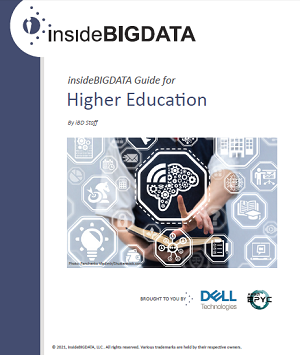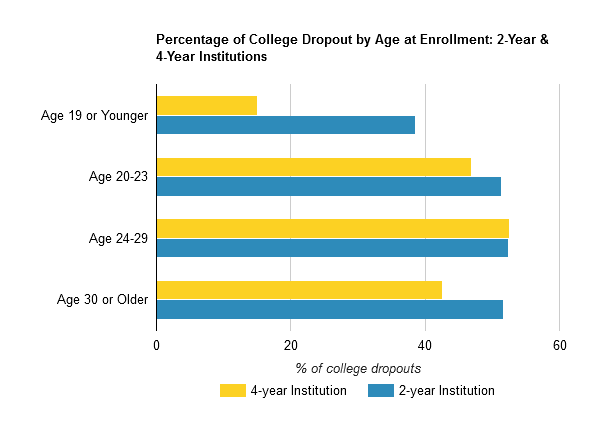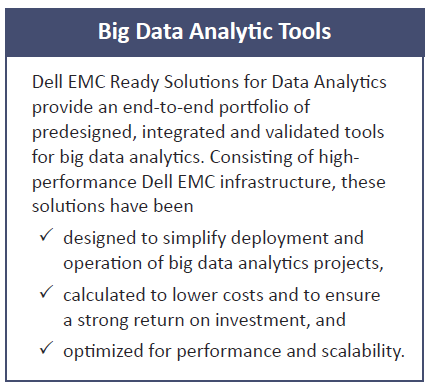
This insideBIGDATA technology guide co-sponsored by Dell Technologies and AMD, insideBIGDATA Guide for Higher Education, discusses how higher education leaders today want to improve student and institutional success through digital transformation. Dell Technologies is uniquely positioned to help at every step of the way, leveraging a robust portfolio of solutions for data analytics, AI and HPC and coupled with a deep understanding of the missions, visions, and strategies of higher education institutions.
Introduction
The connected campus is a critical enabler of both academic and operational continuity in the modern era of remote teaching and learning. It helps ensure innovative, student-centered learning and robust research initiatives while maintaining both the operational efficiencies and the fiscal responsibilities of the institution.
The primary goal of every higher education institution is to help students become successful in learning and in their future careers. Higher education institutions collect—and therefore have access to—a variety of data. They collect recruitment data when students visit their website, tour their campus or engage with their marketing messages. Then there’s enrollment data, as along with data from schools’ financial, student information and learning management systems, alumni engagement, development programs and other siloed sources.
These data points being generated could be used to improve outcomes; however, schools make use of only a small sliver of the data they collect. For example, they have predominantly used data only to show historical trends, rather than assess current or future needs. This is because vital records are often housed in various formats and across diverse systems, with no way to consolidate them.
The challenge is bringing all this information together to drive better decision-making, map the student journey from initial interest to enrollment and provide a better student and campus experience. Embarking on that data driven journey can be daunting, taking considerable time and effort, but a technology partner with proven expertise, infrastructure, and analytics engines to bring it all together can make all the difference.
Dell Technologies is helping higher education institutions store, analyze, and protect their data, turning pools of data into meaningful outcomes to improve student success, operational efficiency and more.
The goal for this Guide is to provide direction for enterprise thought leaders on ways of leveraging big `data technologies in support of analytics proficiencies designed to work more independently and effectively across a few distinct areas in higher education: student success and workforce readiness, simplified systems and processes, and accelerate research.
Student success and workforce readiness
The dynamics of higher education are shifting. To prepare students for a constantly changing world, higher education is creating more personalized and collaborative learning environments. Students expect access to resources from any device, from any location, at any time to enable remote learning. Administrators and instructors are looking to apply data-driven analytics to track student progress in real time to improve student outcomes. The campus landscape itself is undergoing change as IoT and smart devices make their way into mainstream campus life. In order to keep pace and stay competitive in this new digital economy, colleges and universities are embracing more and more data analytics as a road towards successful digital transformation.
The lifespan of a college student starts before they ever enroll. Higher education institutions first must attract students who not only are interested in enrolling but fit the appropriate criteria for a successful experience while at the school as well. Once they know a student is potentially interested in attending, they can delve into their test scores, high school academic history, and other information to determine if a student is likely to succeed. They can also use data-intense algorithms to better understand what the appropriate amount of information they should send students, depending on the latest data trends. For instance, colleges and universities that aim to increase conversion rates can leverage data analytics from multiple sources throughout the application process to ensure that those enrolled have a high chance of staying at the institution and completing their higher education journey at a school.
Likewise, colleges can use data analytics to identify students who could be recruited online rather than in a traditional campus setting. With advances in technology, students are able to connect more
effectively than ever—from anywhere. They can use new predictive analytics to feed AI tools to improve their educational experience without leaving their own homes.
Once enrolled, data analytics can help students and institutions find the best path for success both at the school and in the future. This is not only beneficial for the student, but also helps colleges and universities with retention rates. While higher ed institutions have continued to see enrollment numbers rise, unfortunately so has drop out rates. In order to improve the visibility of how a student is performing, many higher ed institutions are analyzing more and more data sources to gain actionable insight.

Colleges and universities traditionally have relied only on academic and curricular data to evaluate student achievement. But the emerging trend is to expand the scope and consider various data sources that could paint a more comprehensive picture of students’ backgrounds and their overall experience on campus or online. For example, many higher education institutions now leverage personality test information, as well as other social and personal information measures, to provide more insight into what learning environments might be best for individual students. In fact this also benefits the faculty as data analytics enables professors to better understand the engagement and class comprehension of its content, assignments, course design and more.
This feedback is incredibly valuable to educators as well as course authors, so they can make adjustments to the course and better understand its efficacy without compromising its integrity.
By leveraging predictive analytics, educators can identify patterns of students’ learning deficits and customize the academic experience so they are aligned to learn. It also can help students accelerate their learning by allowing them to move quickly through content they already know and provide them with additional support in areas they have not mastered. Therefore, the data insights and analysis will help change the conversation for educators regarding how to think about students’ progress and sustain success. But with all this data comes a need for better ways to store, process and analyze it.

Higher education institutions that make data analytic platforms central to their modernization plans will reap value much more quickly, and will be able to adapt swiftly—sometimes almost instantaneously—as changes continue to unfold.
There are many great analytic platforms out there but few infrastructure providers who can offer an end-to-end solutions for different analytic software tools.
Higher education institutions must also be able to leverage real-time analytic capabilities, so schools can perform timely data analysis. That can help give universities an end-to-end view of what’s happening at every stage of their interactions with a student from the enrollment process all the way through graduation. While each activity is a single data point, multiple pieces of information creates a larger picture that can be used to recognize patterns in student behavior, curriculum gaps and other key insights. Data analytics have changed the way all this information is processed, making it possible to identify trends and patterns which can then be used to inform better decisions, in real
time, at scale. Leveraging data analytic solutions from Dell Technologies help higher education institutions achieve this desired outcome.
Over the next few weeks we will explore these topics:
- Introduction, Student success and workforce readiness
- Simplify systems & processes,
- Accelerate research, Conclusion, Next Steps with Dell Technologies and AMD
Download the complete insideBIGDATA Guide for Higher Education courtesy of Dell Technologies and AMD.




Speak Your Mind